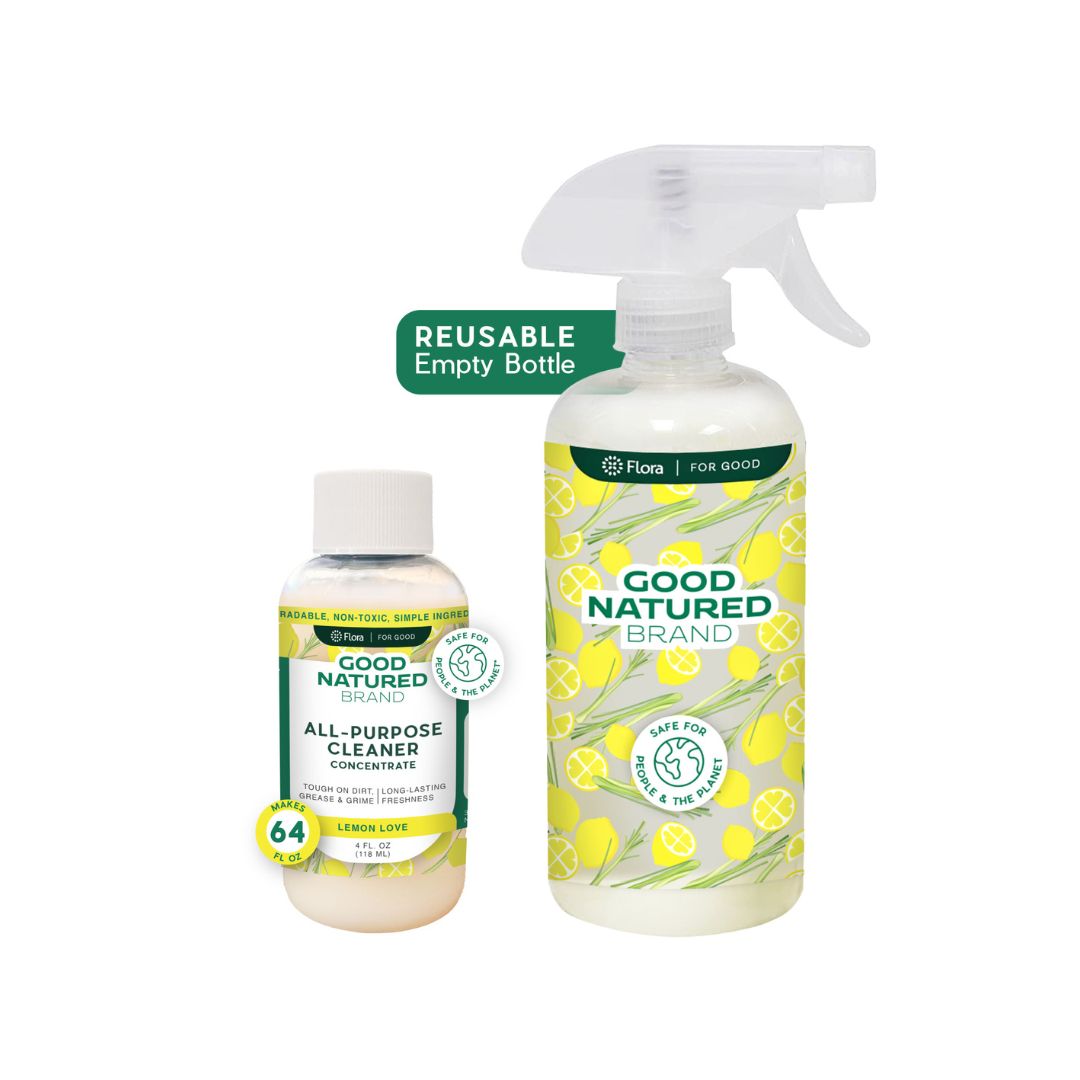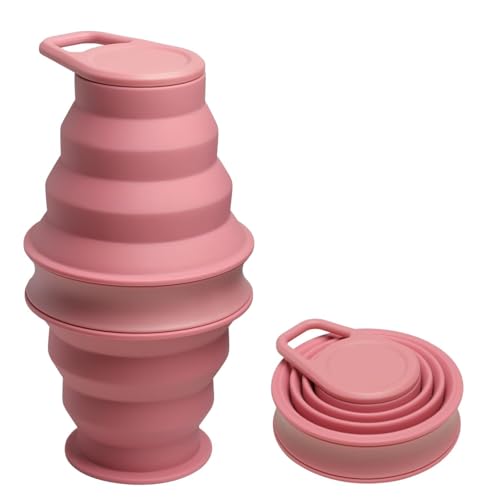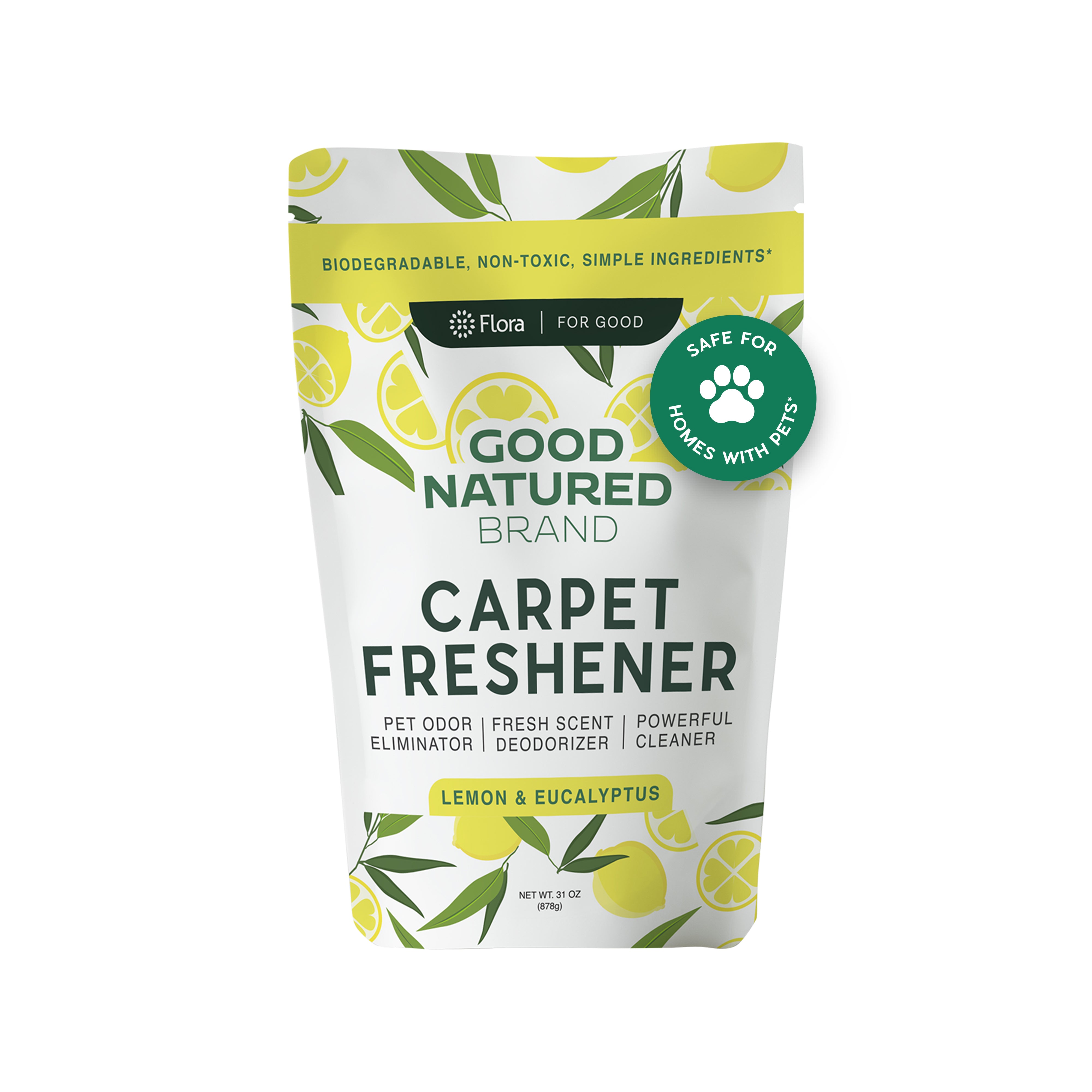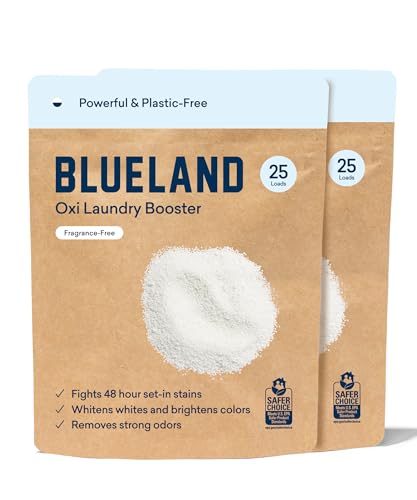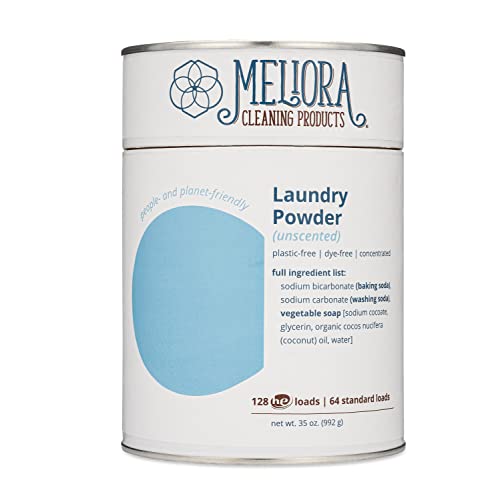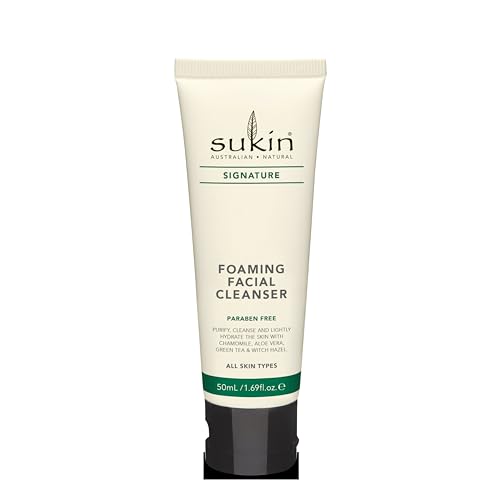
SUKIN Foaming Facial Cleanser - Gentle Clean, No Animal Testing, Certified Organic - 1.69oz


Vanillin
High RiskVanillin is a substituted aromatic aldehyde primarily used as a flavoring and fragrance agent in various products. It is most commonly derived from vanilla beans but can also be synthesized from other sources. Its role includes enhancing taste and aroma in food and cosmetic applications.
Sustai Insights
Vanillin serves as a flavor enhancer and fragrance component, contributing positively to product appeal. However, it is associated with high allergenic potential, posing risks such as skin irritation and respiratory effects. While its carcinogenicity and reproductive toxicity are low, regulatory bodies may impose restrictions on its use. Overall, the ingredient carries a high-risk assessment due to these health concerns, and safer alternatives should be considered.
Linalool
High RiskLinalool is a terpene commonly found in various plants, particularly in lavender and mint. It is primarily used in products for its fragrance and potential antimicrobial properties. Linalool is also utilized in formulations for its ability to enhance the sensory experience of personal care and household products.
Sustai Insights
Linalool offers functional benefits as a naturally occurring fragrance component and may exhibit antimicrobial properties. However, it presents high allergenic potential, with concerns about skin irritation and sensitization. Environmental risks include contamination issues, though it is not classified as a persistent pollutant. Regulatory bodies have noted the need for careful handling due to its allergenic nature. Overall, despite some beneficial attributes, the ingredient carries a high risk profile, warranting cautious use and consideration of safer alternatives.
Benzyl Alcohol
High RiskBenzyl alcohol is a naturally occurring and synthetic aromatic alcohol commonly used as a solvent, preservative, and fragrance ingredient in various products. It is found in both plant sources and as a synthetic compound, functioning primarily to maintain product stability and enhance fragrance profiles.
Sustai Insights
Benzyl alcohol serves effectively as a preservative and solvent, contributing to product stability and sensory qualities. However, it poses potential health risks, particularly as an allergen, with high concern for immunotoxicity. Environmental risks include being a pollutant with low bioaccumulation potential. Regulatory agencies have established restrictions on its use in certain products. Overall, the risk level associated with benzyl alcohol is assessed as high, necessitating careful consideration of its use and potential alternatives.
Cocamidopropyl Betaine
High RiskCocamidopropyl betaine is a synthetic surfactant derived from coconut oil, commonly used in personal care products for its mild cleansing and foaming properties. It functions as a surfactant, emulsifier, and thickening agent, contributing to the texture and performance of formulations.
Sustai Insights
Cocamidopropyl betaine offers functional benefits as a gentle surfactant, enhancing product foaming and texture. However, it may pose low to moderate allergenic risks and is subject to high use restrictions due to contamination concerns. Regulatory bodies have advised on its safe levels of usage, categorizing its risk level as high overall. Users should practice caution, particularly with sensitive populations, and consider alternatives like naturally derived surfactants for safer formulations.
Citrus Reticulata Peel Oil
Medium RiskCitrus reticulata peel oil is an essential oil derived from the peel of the mandarin orange. It is commonly used in cosmetic and personal care products for its fragrance and potential skin-conditioning properties. The oil is obtained through cold pressing, preserving its natural components.
Sustai Insights
Citrus reticulata peel oil offers functional benefits such as natural fragrance and potential antimicrobial effects. However, it carries a high allergenic potential, with risks of skin irritation and other allergic reactions. Regulatory bodies have noted moderate usage restrictions due to persistence and bioaccumulation concerns. Overall, the ingredient presents a medium risk level, necessitating careful usage practices, particularly for sensitive populations. Safer alternatives may include synthetic or other plant-derived fragrances.
Camellia Sinensis (Green Tea) Leaf Extract
Medium RiskCamellia sinensis (green tea) leaf extract is derived from the leaves of the Camellia sinensis plant, primarily known for its antioxidant properties. It is commonly used in cosmetic formulations for its potential to soothe the skin and provide protective benefits against environmental stressors.
Sustai Insights
Camellia sinensis leaf extract offers functional benefits, including antioxidant properties that may protect the skin from damage and enhance product efficacy. While generally regarded as safe, it presents moderate allergenic potential and low concerns for carcinogenic or reproductive toxicity. Environmental risks are minimal; however, the sourcing practices should be evaluated for sustainability. Regulatory bodies do not impose significant restrictions, indicating a low-risk profile overall. Safe usage practices are advisable, and alternatives include other botanical extracts with similar benefits.
Glycerin
Medium RiskGlycerin (also called glycerol) is a naturally occurring compound commonly used in personal care and cosmetic products. It functions as a humectant, attracting moisture to the skin, and is also utilized as a solvent and emollient to enhance product texture and stability.
Sustai Insights
Glycerin is valued for its effective moisturizing properties and biodegradability, making it a widely accepted ingredient in formulations. It poses low health risks, including low concerns for carcinogenicity and allergies. However, moderate use restrictions exist due to regulatory guidelines. While glycerin does not significantly contribute to environmental pollution, its production process should be ethically sourced. Overall, glycerin holds a medium risk level, emphasizing the importance of safe usage practices and considering sustainable alternatives.
Limonene
Medium RiskLimonene is a scent ingredient and solvent naturally found in citrus fruits, commonly used in personal care and cleaning products for its fragrant properties. It serves as a flavoring agent and enhances the overall sensory experience of products.
Sustai Insights
Limonene offers functional benefits such as acting as a solvent and fragrance enhancer. However, it carries a high allergenic potential, which can trigger skin or respiratory sensitivities in some individuals. Environmental concerns include moderate persistence and bioaccumulation, along with potential ecotoxicity. Regulatory restrictions necessitate verification in products containing this ingredient. Overall, the risk level is assessed as medium, emphasizing the importance of cautious use, particularly for sensitive populations. Safer alternatives may be considered to mitigate these risks.
Phenoxyethanol
Medium RiskPhenoxyethanol is a preservative used in cosmetics and personal care products to prevent microbial growth and extend shelf life. It is commonly found in formulations such as lotions, creams, and serums.
Sustai Insights
Phenoxyethanol serves effectively as a preservative, ensuring product stability and safety by inhibiting microbial growth. It is considered to have low health risks regarding carcinogenicity, allergies, and reproductive toxicity. However, moderate use restrictions exist, and regulatory bodies have advised caution in specific applications. Environmental concerns include its potential as a pollutant, although it is not highly bioaccumulative. Overall, the ingredient presents a medium risk level, with safe usage practices recommended and alternative preservatives available for those seeking greener options.
Vanilla Planifolia (Vanilla) Fruit Extract
Low RiskVanilla planifolia (vanilla) fruit extract is derived from the fruit of the vanilla plant. It is commonly used for its aromatic properties and as a flavoring agent in various products, including food, cosmetics, and personal care items.
Sustai Insights
Vanilla fruit extract offers functional benefits such as flavor enhancement and fragrance. It is sustainably sourced with low environmental impact and exhibits low risk for carcinogenicity and developmental toxicity. However, it may cause skin irritation in some individuals and has low to moderate allergenic potential. Regulatory bodies have not imposed significant restrictions, leading to an overall low risk assessment. Safe usage practices should be observed, and alternatives include synthetic vanillin for those seeking more stable options.
Hamamelis Virginiana (Witch Hazel) Extract
Low RiskHamamelis virginiana (witch hazel) extract is derived from the bark and leaves of the witch hazel plant. It is commonly used in cosmetic products for its astringent properties, helping to tighten skin and reduce irritation. The extract is recognized for its soothing effects on the skin.
Sustai Insights
Witch hazel extract provides functional benefits as an astringent, helping to minimize skin irritation and enhance skin appearance. It is generally considered low risk for health concerns, with minimal evidence of carcinogenicity, allergenic potential, or reproductive toxicity. Environmental impact is also low, as it does not significantly contribute to pollution or bioaccumulation. Regulatory bodies have not issued major warnings, supporting its safety for use in cosmetics. For safe usage, it is recommended to avoid contact with eyes and to use in appropriate concentrations. Overall, it is regarded as a low-risk ingredient.
Chamomilla Recutita (Matricaria) Flower Extract
Low RiskChamomilla recutita (Matricaria) flower extract is derived from the flower of the chamomile plant. It is commonly used in cosmetic products for its soothing properties and as an anti-inflammatory agent. This extract is valued for its potential to calm skin irritations and enhance overall skin appearance.
Sustai Insights
Chamomilla recutita (Matricaria) flower extract is recognized for its soothing and anti-inflammatory benefits, making it effective in skincare formulations. It is sustainably sourced and not associated with significant health risks, such as carcinogenicity or allergenic potential, resulting in a low-risk profile. Environmental concerns are minimal as it does not contribute significantly to pollution. Regulatory bodies impose few restrictions on its use, further supporting its safety. However, users should practice standard safety measures, particularly if they have known sensitivities. Overall, it is a low-risk ingredient with favorable attributes.
Decyl Glucoside
Low RiskDecyl glucoside is a glucose-based surfactant derived from natural sources, primarily used as a mild cleansing agent in personal care products. It effectively reduces surface tension, allowing for improved mixing of ingredients and enhanced cleansing properties without stripping natural oils from the skin.
Sustai Insights
Decyl glucoside offers functional benefits as a non-ionic surfactant, making it suitable for sensitive skin formulations. It is biodegradable and derived from renewable resources, supporting sustainability. Health risks are primarily low, with minimal concerns regarding irritation and allergies. Environmental risks are low, as it does not significantly contribute to pollution or bioaccumulation. Regulatory status is generally favorable, with low restrictions noted. Overall, decyl glucoside presents a low risk for use in consumer products, making it a suitable choice for gentle formulations.
Rosa Canina (Dog Rose) Fruit Oil
Low RiskRosa canina (dog rose) fruit oil is derived from the fruit of the dog rose plant. It is commonly used in cosmetics for its emollient properties, helping to moisturize and soothe the skin. Additionally, it may contain bioactive compounds that contribute to its potential skin benefits.
Sustai Insights
Rosa canina fruit oil offers functional benefits as a moisturizer and skin conditioner, with sustainable sourcing potential. Health risks are low, with minimal concerns regarding carcinogenicity, allergies, or reproductive toxicity. Environmental risks are also low, with no significant pollutant potential. Regulatory agencies do not list it under restrictions, indicating its safety for use. Overall, the risk level is assessed as low, making it a suitable ingredient for cosmetic formulations.
Peg 150 Pentaerythrityl Tetrastearate
Low RiskPEG-150 Pentaerythrityl Tetrastearate is a synthetic polymer used primarily as an emulsifier, thickener, and stabilizer in various cosmetic and personal care products. It helps to improve texture and consistency, allowing for better application and performance of formulations.
Sustai Insights
PEG-150 Pentaerythrityl Tetrastearate provides functional benefits, such as enhancing product stability and improving application properties. It is regarded as low risk concerning health impacts, with minimal concerns for carcinogenicity, allergies, or reproductive toxicity. However, there are contamination concerns during production, and it may pose environmental risks if not managed properly. Regulatory bodies have not placed significant restrictions on its use, indicating a favorable safety profile. Overall, it is considered low risk, with no immediate health concerns for consumers, although ethical sourcing practices should be observed.
Oenothera Biennis (Evening Primrose) Oil
Low RiskEvening primrose oil is extracted from Oenothera biennis seeds and is commonly used in cosmetic formulations for its moisturizing properties. It contains gamma-linolenic acid (GLA), which is believed to support skin health and improve hydration.
Sustai Insights
Evening primrose oil offers functional benefits as a moisturizer and skin soother, derived from sustainably sourced seeds, contributing to its appeal. Health risks are low, with negligible concerns regarding carcinogenicity, allergies, and reproductive toxicity. Environmental assessments indicate no significant pollutants or bioaccumulation potential. Regulatory bodies do not impose restrictions on its use. Overall, the risk level is low, making it a suitable choice for cosmetic applications. Safe usage practices should be followed, although alternatives like borage oil may provide similar benefits.
Lavandula Angustifolia (Lavender) Oil
Low RiskLavandula angustifolia (lavender) oil is a volatile oil derived from the flowers of the lavender plant. It is commonly used in cosmetic and personal care products for its fragrance and potential calming properties.
Sustai Insights
Lavender oil offers functional benefits such as providing fragrance and potential relaxation effects. It is biodegradable and often sustainably sourced. Health risks are minimal, with low concerns for carcinogenicity, allergies, or reproductive toxicity; however, there is a low to moderate concern regarding endocrine disruption. Environmental risks are low, with no significant pollutant or bioaccumulation potential noted. Regulatory status is favorable, with no current restrictions. Safe usage practices include avoiding excessive concentrations, especially in sensitive applications. Overall, the risk level associated with lavender oil is assessed as low.
Macadamia Integrifolia (Macadamia) Nut Oil
Low RiskMacadamia integrifolia (macadamia) nut oil is derived from the nuts of the macadamia tree. It serves primarily as a moisturizing agent and emollient in cosmetic formulations due to its fatty acid composition, providing a smooth texture and enhancing skin hydration.
Sustai Insights
Macadamia nut oil offers functional benefits as a highly effective emollient, enhancing skin moisture and texture while being biodegradable and sourced from renewable resources. Health risks are minimal, with low concerns for carcinogenicity, allergies, or reproductive toxicity. Regulatory bodies impose few restrictions on its use. Environmental risks appear low, with no significant pollutant or bioaccumulation concerns identified. Overall, the ingredient is assessed as low risk, making it a suitable choice in cosmetic formulations. Safe usage practices should still be followed, and alternatives may include other plant-based oils for similar benefits.
Macadamia Integrifolia (Macadamia) Nut Oil
Low RiskMacadamia integrifolia (macadamia) nut oil is derived from the nuts of the macadamia tree. It serves primarily as a moisturizing agent and emollient in cosmetic formulations due to its fatty acid composition, providing a smooth texture and enhancing skin hydration.
Sustai Insights
Macadamia nut oil offers functional benefits as a highly effective emollient, enhancing skin moisture and texture while being biodegradable and sourced from renewable resources. Health risks are minimal, with low concerns for carcinogenicity, allergies, or reproductive toxicity. Regulatory bodies impose few restrictions on its use. Environmental risks appear low, with no significant pollutant or bioaccumulation concerns identified. Overall, the ingredient is assessed as low risk, making it a suitable choice in cosmetic formulations. Safe usage practices should still be followed, and alternatives may include other plant-based oils for similar benefits.
Water
Low RiskWater is a clear, colorless liquid essential for various biological processes. It serves as a solvent in formulations, facilitating the dissolution of other ingredients and enhancing product texture and application. Additionally, water plays a crucial role in hydration and is a key component in many cosmetic and personal care products.
Sustai Insights
Water is an effective solvent and hydrator, contributing to the texture and efficacy of formulations. It is biodegradable and generally regarded as safe, with low concerns regarding carcinogenicity, allergies, and reproductive toxicity. However, excessive water usage can lead to environmental concerns, particularly regarding resource depletion. Regulatory bodies do not impose restrictions on water use in cosmetics. Overall, the risks associated with water are low, making it a safe and essential ingredient.
Aloe Barbadensis (Aloe Vera) Leaf Juice
Low RiskAloe barbadensis (aloe vera) leaf juice is derived from the succulent aloe vera plant, known for its hydrating and soothing properties. It is commonly used in cosmetic formulations for its moisturizing effects and is often included in products aimed at skin care and healing.
Sustai Insights
Aloe vera leaf juice offers functional benefits as a moisturizer and skin soothing agent, while being sustainably sourced and biodegradable. Health risks are low, with minimal concerns regarding carcinogenicity, allergies, and reproductive toxicity. Environmental impact is also low, with no significant pollutants identified. Regulatory agencies impose few restrictions. Overall, the ingredient poses a low risk, making it a favorable choice in cosmetic formulations.
Vanilla Planifolia (Vanilla) Fruit Extract
Low RiskVanilla planifolia (vanilla) fruit extract is derived from the fruit of the vanilla plant. It is commonly used for its aromatic properties and as a flavoring agent in various products, including food, cosmetics, and personal care items.
Sustai Insights
Vanilla fruit extract offers functional benefits such as flavor enhancement and fragrance. It is sustainably sourced with low environmental impact and exhibits low risk for carcinogenicity and developmental toxicity. However, it may cause skin irritation in some individuals and has low to moderate allergenic potential. Regulatory bodies have not imposed significant restrictions, leading to an overall low risk assessment. Safe usage practices should be observed, and alternatives include synthetic vanillin for those seeking more stable options.
Hamamelis Virginiana (Witch Hazel) Extract
Low RiskHamamelis virginiana (witch hazel) extract is derived from the bark and leaves of the witch hazel plant. It is commonly used in cosmetic products for its astringent properties, helping to tighten skin and reduce irritation. The extract is recognized for its soothing effects on the skin.
Sustai Insights
Witch hazel extract provides functional benefits as an astringent, helping to minimize skin irritation and enhance skin appearance. It is generally considered low risk for health concerns, with minimal evidence of carcinogenicity, allergenic potential, or reproductive toxicity. Environmental impact is also low, as it does not significantly contribute to pollution or bioaccumulation. Regulatory bodies have not issued major warnings, supporting its safety for use in cosmetics. For safe usage, it is recommended to avoid contact with eyes and to use in appropriate concentrations. Overall, it is regarded as a low-risk ingredient.
Chamomilla Recutita (Matricaria) Flower Extract
Low RiskChamomilla recutita (Matricaria) flower extract is derived from the flower of the chamomile plant. It is commonly used in cosmetic products for its soothing properties and as an anti-inflammatory agent. This extract is valued for its potential to calm skin irritations and enhance overall skin appearance.
Sustai Insights
Chamomilla recutita (Matricaria) flower extract is recognized for its soothing and anti-inflammatory benefits, making it effective in skincare formulations. It is sustainably sourced and not associated with significant health risks, such as carcinogenicity or allergenic potential, resulting in a low-risk profile. Environmental concerns are minimal as it does not contribute significantly to pollution. Regulatory bodies impose few restrictions on its use, further supporting its safety. However, users should practice standard safety measures, particularly if they have known sensitivities. Overall, it is a low-risk ingredient with favorable attributes.
Decyl Glucoside
Low RiskDecyl glucoside is a glucose-based surfactant derived from natural sources, primarily used as a mild cleansing agent in personal care products. It effectively reduces surface tension, allowing for improved mixing of ingredients and enhanced cleansing properties without stripping natural oils from the skin.
Sustai Insights
Decyl glucoside offers functional benefits as a non-ionic surfactant, making it suitable for sensitive skin formulations. It is biodegradable and derived from renewable resources, supporting sustainability. Health risks are primarily low, with minimal concerns regarding irritation and allergies. Environmental risks are low, as it does not significantly contribute to pollution or bioaccumulation. Regulatory status is generally favorable, with low restrictions noted. Overall, decyl glucoside presents a low risk for use in consumer products, making it a suitable choice for gentle formulations.
Rosa Canina (Dog Rose) Fruit Oil
Low RiskRosa canina (dog rose) fruit oil is derived from the fruit of the dog rose plant. It is commonly used in cosmetics for its emollient properties, helping to moisturize and soothe the skin. Additionally, it may contain bioactive compounds that contribute to its potential skin benefits.
Sustai Insights
Rosa canina fruit oil offers functional benefits as a moisturizer and skin conditioner, with sustainable sourcing potential. Health risks are low, with minimal concerns regarding carcinogenicity, allergies, or reproductive toxicity. Environmental risks are also low, with no significant pollutant potential. Regulatory agencies do not list it under restrictions, indicating its safety for use. Overall, the risk level is assessed as low, making it a suitable ingredient for cosmetic formulations.
Citrus Reticulata Peel Oil
Medium RiskCitrus reticulata peel oil is an essential oil derived from the peel of the mandarin orange. It is commonly used in cosmetic and personal care products for its fragrance and potential skin-conditioning properties. The oil is obtained through cold pressing, preserving its natural components.
Sustai Insights
Citrus reticulata peel oil offers functional benefits such as natural fragrance and potential antimicrobial effects. However, it carries a high allergenic potential, with risks of skin irritation and other allergic reactions. Regulatory bodies have noted moderate usage restrictions due to persistence and bioaccumulation concerns. Overall, the ingredient presents a medium risk level, necessitating careful usage practices, particularly for sensitive populations. Safer alternatives may include synthetic or other plant-derived fragrances.
Vanillin
High RiskVanillin is a substituted aromatic aldehyde primarily used as a flavoring and fragrance agent in various products. It is most commonly derived from vanilla beans but can also be synthesized from other sources. Its role includes enhancing taste and aroma in food and cosmetic applications.
Sustai Insights
Vanillin serves as a flavor enhancer and fragrance component, contributing positively to product appeal. However, it is associated with high allergenic potential, posing risks such as skin irritation and respiratory effects. While its carcinogenicity and reproductive toxicity are low, regulatory bodies may impose restrictions on its use. Overall, the ingredient carries a high-risk assessment due to these health concerns, and safer alternatives should be considered.
Peg 150 Pentaerythrityl Tetrastearate
Low RiskPEG-150 Pentaerythrityl Tetrastearate is a synthetic polymer used primarily as an emulsifier, thickener, and stabilizer in various cosmetic and personal care products. It helps to improve texture and consistency, allowing for better application and performance of formulations.
Sustai Insights
PEG-150 Pentaerythrityl Tetrastearate provides functional benefits, such as enhancing product stability and improving application properties. It is regarded as low risk concerning health impacts, with minimal concerns for carcinogenicity, allergies, or reproductive toxicity. However, there are contamination concerns during production, and it may pose environmental risks if not managed properly. Regulatory bodies have not placed significant restrictions on its use, indicating a favorable safety profile. Overall, it is considered low risk, with no immediate health concerns for consumers, although ethical sourcing practices should be observed.
Oenothera Biennis (Evening Primrose) Oil
Low RiskEvening primrose oil is extracted from Oenothera biennis seeds and is commonly used in cosmetic formulations for its moisturizing properties. It contains gamma-linolenic acid (GLA), which is believed to support skin health and improve hydration.
Sustai Insights
Evening primrose oil offers functional benefits as a moisturizer and skin soother, derived from sustainably sourced seeds, contributing to its appeal. Health risks are low, with negligible concerns regarding carcinogenicity, allergies, and reproductive toxicity. Environmental assessments indicate no significant pollutants or bioaccumulation potential. Regulatory bodies do not impose restrictions on its use. Overall, the risk level is low, making it a suitable choice for cosmetic applications. Safe usage practices should be followed, although alternatives like borage oil may provide similar benefits.
Camellia Sinensis (Green Tea) Leaf Extract
Medium RiskCamellia sinensis (green tea) leaf extract is derived from the leaves of the Camellia sinensis plant, primarily known for its antioxidant properties. It is commonly used in cosmetic formulations for its potential to soothe the skin and provide protective benefits against environmental stressors.
Sustai Insights
Camellia sinensis leaf extract offers functional benefits, including antioxidant properties that may protect the skin from damage and enhance product efficacy. While generally regarded as safe, it presents moderate allergenic potential and low concerns for carcinogenic or reproductive toxicity. Environmental risks are minimal; however, the sourcing practices should be evaluated for sustainability. Regulatory bodies do not impose significant restrictions, indicating a low-risk profile overall. Safe usage practices are advisable, and alternatives include other botanical extracts with similar benefits.
Lavandula Angustifolia (Lavender) Oil
Low RiskLavandula angustifolia (lavender) oil is a volatile oil derived from the flowers of the lavender plant. It is commonly used in cosmetic and personal care products for its fragrance and potential calming properties.
Sustai Insights
Lavender oil offers functional benefits such as providing fragrance and potential relaxation effects. It is biodegradable and often sustainably sourced. Health risks are minimal, with low concerns for carcinogenicity, allergies, or reproductive toxicity; however, there is a low to moderate concern regarding endocrine disruption. Environmental risks are low, with no significant pollutant or bioaccumulation potential noted. Regulatory status is favorable, with no current restrictions. Safe usage practices include avoiding excessive concentrations, especially in sensitive applications. Overall, the risk level associated with lavender oil is assessed as low.
Macadamia Integrifolia (Macadamia) Nut Oil
Low RiskMacadamia integrifolia (macadamia) nut oil is derived from the nuts of the macadamia tree. It serves primarily as a moisturizing agent and emollient in cosmetic formulations due to its fatty acid composition, providing a smooth texture and enhancing skin hydration.
Sustai Insights
Macadamia nut oil offers functional benefits as a highly effective emollient, enhancing skin moisture and texture while being biodegradable and sourced from renewable resources. Health risks are minimal, with low concerns for carcinogenicity, allergies, or reproductive toxicity. Regulatory bodies impose few restrictions on its use. Environmental risks appear low, with no significant pollutant or bioaccumulation concerns identified. Overall, the ingredient is assessed as low risk, making it a suitable choice in cosmetic formulations. Safe usage practices should still be followed, and alternatives may include other plant-based oils for similar benefits.
Macadamia Integrifolia (Macadamia) Nut Oil
Low RiskMacadamia integrifolia (macadamia) nut oil is derived from the nuts of the macadamia tree. It serves primarily as a moisturizing agent and emollient in cosmetic formulations due to its fatty acid composition, providing a smooth texture and enhancing skin hydration.
Sustai Insights
Macadamia nut oil offers functional benefits as a highly effective emollient, enhancing skin moisture and texture while being biodegradable and sourced from renewable resources. Health risks are minimal, with low concerns for carcinogenicity, allergies, or reproductive toxicity. Regulatory bodies impose few restrictions on its use. Environmental risks appear low, with no significant pollutant or bioaccumulation concerns identified. Overall, the ingredient is assessed as low risk, making it a suitable choice in cosmetic formulations. Safe usage practices should still be followed, and alternatives may include other plant-based oils for similar benefits.
Water
Low RiskWater is a clear, colorless liquid essential for various biological processes. It serves as a solvent in formulations, facilitating the dissolution of other ingredients and enhancing product texture and application. Additionally, water plays a crucial role in hydration and is a key component in many cosmetic and personal care products.
Sustai Insights
Water is an effective solvent and hydrator, contributing to the texture and efficacy of formulations. It is biodegradable and generally regarded as safe, with low concerns regarding carcinogenicity, allergies, and reproductive toxicity. However, excessive water usage can lead to environmental concerns, particularly regarding resource depletion. Regulatory bodies do not impose restrictions on water use in cosmetics. Overall, the risks associated with water are low, making it a safe and essential ingredient.
Glycerin
Medium RiskGlycerin (also called glycerol) is a naturally occurring compound commonly used in personal care and cosmetic products. It functions as a humectant, attracting moisture to the skin, and is also utilized as a solvent and emollient to enhance product texture and stability.
Sustai Insights
Glycerin is valued for its effective moisturizing properties and biodegradability, making it a widely accepted ingredient in formulations. It poses low health risks, including low concerns for carcinogenicity and allergies. However, moderate use restrictions exist due to regulatory guidelines. While glycerin does not significantly contribute to environmental pollution, its production process should be ethically sourced. Overall, glycerin holds a medium risk level, emphasizing the importance of safe usage practices and considering sustainable alternatives.
Limonene
Medium RiskLimonene is a scent ingredient and solvent naturally found in citrus fruits, commonly used in personal care and cleaning products for its fragrant properties. It serves as a flavoring agent and enhances the overall sensory experience of products.
Sustai Insights
Limonene offers functional benefits such as acting as a solvent and fragrance enhancer. However, it carries a high allergenic potential, which can trigger skin or respiratory sensitivities in some individuals. Environmental concerns include moderate persistence and bioaccumulation, along with potential ecotoxicity. Regulatory restrictions necessitate verification in products containing this ingredient. Overall, the risk level is assessed as medium, emphasizing the importance of cautious use, particularly for sensitive populations. Safer alternatives may be considered to mitigate these risks.
Linalool
High RiskLinalool is a terpene commonly found in various plants, particularly in lavender and mint. It is primarily used in products for its fragrance and potential antimicrobial properties. Linalool is also utilized in formulations for its ability to enhance the sensory experience of personal care and household products.
Sustai Insights
Linalool offers functional benefits as a naturally occurring fragrance component and may exhibit antimicrobial properties. However, it presents high allergenic potential, with concerns about skin irritation and sensitization. Environmental risks include contamination issues, though it is not classified as a persistent pollutant. Regulatory bodies have noted the need for careful handling due to its allergenic nature. Overall, despite some beneficial attributes, the ingredient carries a high risk profile, warranting cautious use and consideration of safer alternatives.
Benzyl Alcohol
High RiskBenzyl alcohol is a naturally occurring and synthetic aromatic alcohol commonly used as a solvent, preservative, and fragrance ingredient in various products. It is found in both plant sources and as a synthetic compound, functioning primarily to maintain product stability and enhance fragrance profiles.
Sustai Insights
Benzyl alcohol serves effectively as a preservative and solvent, contributing to product stability and sensory qualities. However, it poses potential health risks, particularly as an allergen, with high concern for immunotoxicity. Environmental risks include being a pollutant with low bioaccumulation potential. Regulatory agencies have established restrictions on its use in certain products. Overall, the risk level associated with benzyl alcohol is assessed as high, necessitating careful consideration of its use and potential alternatives.
Phenoxyethanol
Medium RiskPhenoxyethanol is a preservative used in cosmetics and personal care products to prevent microbial growth and extend shelf life. It is commonly found in formulations such as lotions, creams, and serums.
Sustai Insights
Phenoxyethanol serves effectively as a preservative, ensuring product stability and safety by inhibiting microbial growth. It is considered to have low health risks regarding carcinogenicity, allergies, and reproductive toxicity. However, moderate use restrictions exist, and regulatory bodies have advised caution in specific applications. Environmental concerns include its potential as a pollutant, although it is not highly bioaccumulative. Overall, the ingredient presents a medium risk level, with safe usage practices recommended and alternative preservatives available for those seeking greener options.
Cocamidopropyl Betaine
High RiskCocamidopropyl betaine is a synthetic surfactant derived from coconut oil, commonly used in personal care products for its mild cleansing and foaming properties. It functions as a surfactant, emulsifier, and thickening agent, contributing to the texture and performance of formulations.
Sustai Insights
Cocamidopropyl betaine offers functional benefits as a gentle surfactant, enhancing product foaming and texture. However, it may pose low to moderate allergenic risks and is subject to high use restrictions due to contamination concerns. Regulatory bodies have advised on its safe levels of usage, categorizing its risk level as high overall. Users should practice caution, particularly with sensitive populations, and consider alternatives like naturally derived surfactants for safer formulations.
Aloe Barbadensis (Aloe Vera) Leaf Juice
Low RiskAloe barbadensis (aloe vera) leaf juice is derived from the succulent aloe vera plant, known for its hydrating and soothing properties. It is commonly used in cosmetic formulations for its moisturizing effects and is often included in products aimed at skin care and healing.
Sustai Insights
Aloe vera leaf juice offers functional benefits as a moisturizer and skin soothing agent, while being sustainably sourced and biodegradable. Health risks are low, with minimal concerns regarding carcinogenicity, allergies, and reproductive toxicity. Environmental impact is also low, with no significant pollutants identified. Regulatory agencies impose few restrictions. Overall, the ingredient poses a low risk, making it a favorable choice in cosmetic formulations.
Discover the Sukin Foaming Facial Cleanser, a gentle yet effective solution for daily skincare that aligns with your values. This cruelty-free cleanser not only purifies your skin but also respects our planet.
- Gentle Cleansing: Formulated to remove dirt and makeup without stripping your skin of its natural oils, leaving it refreshed and radiant.
- Eco-Friendly Practices: Committed to no animal testing and third-party certifications for organic claims, ensuring ethical beauty choices.
- Easy Application: Simply wet your face, dispense a small amount, and massage gently for a clean, smooth complexion.
- Hydrating Formula: Designed to maintain hydration while cleansing, perfect for all skin types, including sensitive skin.
- Follow With Routine: For best results, follow with your favorite toner and moisturizer to enhance your skincare regimen.
This facial cleanser embodies a perfect blend of sustainability, simplicity, and effectiveness, making it a must-have for environmentally and health-conscious consumers.
Subscribe & Save with Sustai
- Best Price Guarantee: Always enjoy the lowest prices on sustainable home essentials.
- No Surprises: We’ll notify you before shipping. No hidden fees, ever.
- You’re in Charge: Change, pause, or cancel your subscription anytime with ease.
- Eco-Friendly Deliveries: Our grouped shipments mean less packaging and lower emissions.
Join us on a sustainable journey. Special offers for a limited time! Prices and promotions may change.
Recommended Products
Discover the Sukin Foaming Facial Cleanser, a gentle yet effective solution for daily skincare that aligns with your values. This cruelty-free cleanser not only purifies your skin but also respects our planet.
- Gentle Cleansing: Formulated to remove dirt and makeup without stripping your skin of its natural oils, leaving it refreshed and radiant.
- Eco-Friendly Practices: Committed to no animal testing and third-party certifications for organic claims, ensuring ethical beauty choices.
- Easy Application: Simply wet your face, dispense a small amount, and massage gently for a clean, smooth complexion.
- Hydrating Formula: Designed to maintain hydration while cleansing, perfect for all skin types, including sensitive skin.
- Follow With Routine: For best results, follow with your favorite toner and moisturizer to enhance your skincare regimen.
This facial cleanser embodies a perfect blend of sustainability, simplicity, and effectiveness, making it a must-have for environmentally and health-conscious consumers.

You can have at most 2 Sustainable Steals products in your cart
Customer Reviews
Customers’ View
Customers appreciate the gentle and effective nature of this foaming facial cleanser, often highlighting its suitability for sensitive skin. Many users commend its formulation with natural ingredients, which they find both nourishing and hydrating. One customer noted, 'This product is very gentle on your skin and made with natural ingredients,' emphasizing its compatibility with a health-conscious lifestyle. The cleanser's pleasant fragrance has also received positive remarks, contributing to an enjoyable cleansing experience. Furthermore, the commitment to cruelty-free practices and use of eco-friendly packaging align well with environmentally conscious values. Overall, consumers find this product to be a reliable choice that supports both skin health and ethical considerations.
AI-generated from the text of customer reviewsThis product has no reviews yet.
